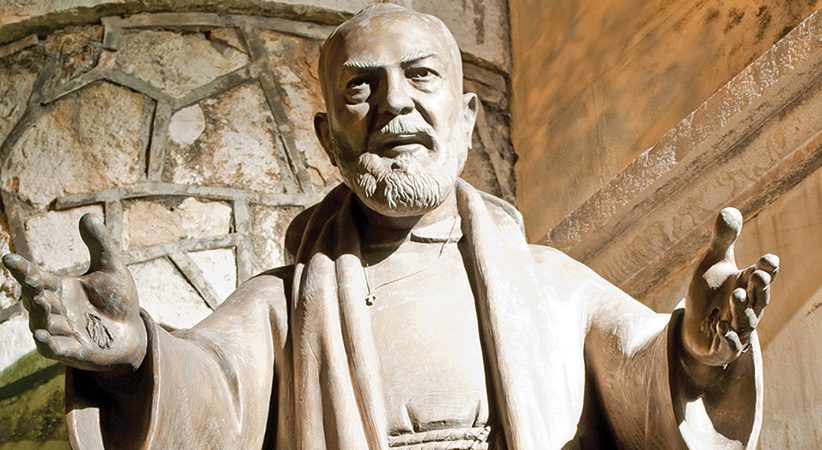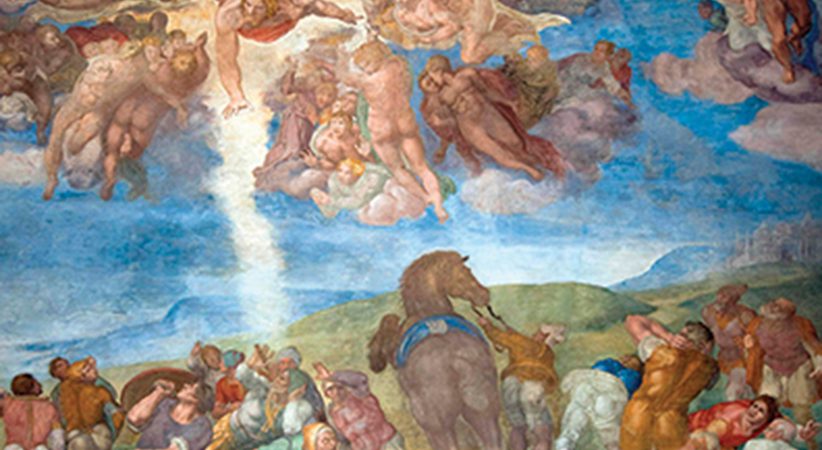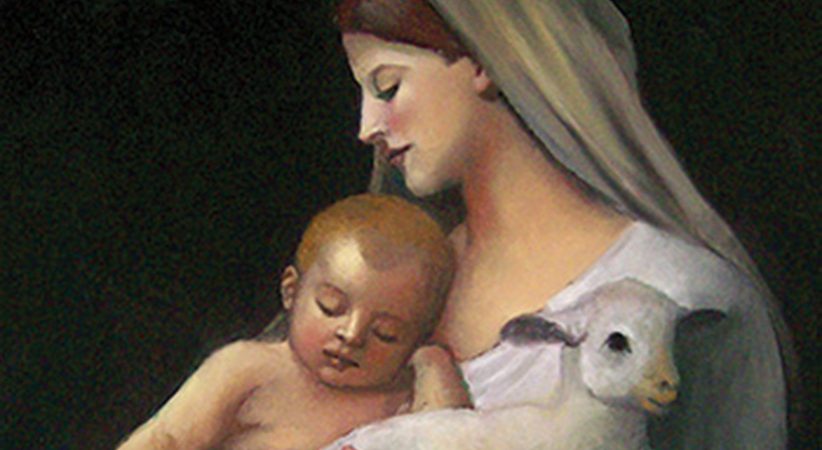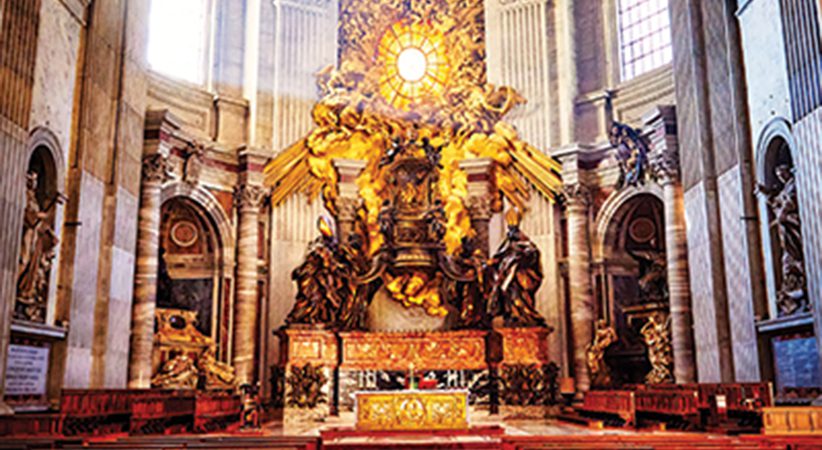Padre Pio: An Example of Holiness and Ministry
Priests and laity have much to learn from the saint
Michael R. Heinlein Comments Off on Padre Pio: An Example of Holiness and Ministry
St. Pius of Pietrelcina — or, more simply, Padre Pio as he was and is affectionately known — is one of the more popular saints of the 20th century. His cultus had spread far and wide even before his death on Sept. 23, 1968. Padre Pio is best known for the supernatural manifestations in his life — most notably in the stigmata and in his uncanny ability to describe to penitents the sins they may have omitted recounting in his confessional.
While these characteristics often tend to relegate Padre Pio’s popularity within the confines of those inclined toward the piously saccharine, as a saint, of course, he is a model of Gospel living for all Christians. Through his witness, each of us encounters Christ. Padre Pio often can be neglected as a model for priests, too — especially because there are a plethora of other saintly priests within the Church’s tradition. But that’s a list from which he should not be excluded.
Beyond his supernatural gifts, Padre Pio lived an otherwise rather ordinary life. His cooperation with God’s grace and his heroically virtuous living are things possible for each of us. And as a priest, it was more often than not his ordinary priestly ministry that affected the lives of the faithful, rather than his supernatural gifts. His ministry is a model for all priests, both in their own quest for holiness and in their service to the faithful entrusted to their care.
Humble Obedience

Padre Pio’s many supernatural gifts caused him a great deal of physical and emotional suffering. Many of his contemporaries reported that these gifts included levitating, prophesy, bilocation, the gift of tongues and the ability to heal and work miracles. Perhaps nothing more stood out in this arena than the stigmata, which, along with his other supernatural abilities, was the source of great pain. Beyond the physical pain, receiving the stigmata brought on investigations and suspicion, as well as undesired attention. In his homily at Padre Pio’s canonization in 2002, Pope St. John Paul II recalled that the saint’s suffering had a purpose. “The life and mission of Padre Pio prove that difficulties and sorrows, if accepted out of love, are transformed into a privileged way of holiness, which opens onto the horizons of a greater good, known only to the Lord,” the pope said. This is a lesson for us all as we answer the call to holiness.
Obedience marked how Padre Pio dealt with the suffering and difficulties that surrounded his stigmata. He endured a variety of trials, especially related to the investigation of his charisms. As St. John Paul said when beatifying Padre Pio in 1999: “Obedience becomes for him a crucible of purification, a path of gradual assimilation to Christ, a strengthening of true holiness.” Obedience is to have the same effect on us all. Along those lines, the pope referenced how Padre Pio once wrote to a superior in his community:
“I strive only to obey you, the good God having made known to me the one thing most acceptable to him and the one way for me to hope for salvation and to sing of victory.”
…………………………………………………………………………………………………………………………………………………………………..
Pope St. John Paul ll: Prayer to Padre Pio
“Teach us, we ask you, humility of heart so we may be counted among the little ones of the Gospel, to whom the Father promised to reveal the mysteries of his kingdom. Help us to pray without ceasing, certain that God knows what we need even before we ask him. Obtain for us the eyes of faith that will be able to recognize right away in the poor and suffering the face of Jesus. Sustain us in the hour of the combat and of the trial and, if we fall, make us experience the joy of the sacrament of forgiveness. Grant us your tender devotion to Mary, the Mother of Jesus and our Mother. Accompany us on our earthly pilgrimage toward the blessed homeland, where we hope to arrive in order to contemplate forever the glory of the Father, the Son and the Holy Spirit. Amen.”
……………………………………………………………………………………………………………………………………………………………..
Padre Pio teaches about the importance of remaining obedient to divine providence, even when it creates hardship and consternation. “In all the events of life, you must recognize the divine will. Adore and bless it, especially in the things which are the hardest for you,” he once said.Padre Pio did not wish that his supernatural gifts would draw attention to himself, and at times he prayed they would go away. But ultimately he embraced them — and their associated hardships — as a gift from God. He saw them as an opportunity to submit himself sacrificially to God’s will. And accepting the difficulties presented in his life was an opportunity to practice obedience in love and joy.
When St. Paul three times asked the Lord to remove his “thorn in the flesh,” Jesus replied: “My grace is sufficient for you, for power is made perfect in weakness” (2 Cor 12:9). It seems as if Padre Pio’s life echoed this response, for he knew that he depended solely on the grace of God. His life echoes St. Paul’s response to the Lord’s admonition: “I will rather boast most gladly of my weaknesses, in order that the power of Christ may dwell with me.”
Attached to his witness of obedience is his exemplary life of humility, and the saint is an example of how the two go hand in hand. As Padre Pio said, in a popular quote attributed to him: “You must always humble yourself lovingly before God and before men, because God speaks only to those who are truly humble, and he enriches them with his gifts.”
Ministry of Reconciliation
For priests, the confessional has the danger of becoming boring or depressing. It’s true that the number of people awaiting the sacrament of mercy has dwindled greatly in recent decades — what St. John Paul II called a crisis in his 2002 annual Holy Thursday Letter to Priests — and a practical consequence is that the times confession is offered likewise have decreased.
Because priests have an abundance of other things to do — especially as more and more work is piled on parish priests — confession often is available no more than one hour a week in the average parish, with the blanket invitation printed in the weekly bulletin of the sacrament’s availability “by appointment.”
……………………………………………………………………………………………………………………………………………………………..
POPE PAUL VI ON PADRE PIO
“Look what fame he had, what a worldwide following gathered around him! But why? Perhaps because he was a philosopher? Because he was wise? Because he had resources at his disposal? Because he said Mass humbly, heard confessions from dawn to dusk and was — it is not easy to say it — one who bore the wounds of Our Lord. He was a man of prayer and suffering.”
………………………………………………………………………………………………………………………………………………………….
Padre Pio is a model for the busy parish priest, because he personified the healing and reconciliatory ministry of Christ. His countless hours in the confessional are part of what made him so well-known, but it was also the means by which his priesthood most directly affected the faithful. He abandoned his own wants and desires so that he could be available to bring God’s people into an encounter with the all-merciful God. Pope John Paul II, at the canonization Mass, hoped that Padre Pio’s example may “encourage priests to carry out with joy and zeal this ministry which is so important today.”Pope Francis has expressed this hope, too. The pope heralded the witness of Padre Pio’s ministry of reconciliation during last year’s Extraordinary Jubilee Year of Mercy, at one point even bringing Padre Pio’s body to the Vatican, holding him up as an example for priests.
“We can say that Padre Pio was a servant of mercy. He did so full time, practicing, at times in exhaustion, the apostolate of listening,” the pope said. He also stated this was because “he was always attached to the source: He was continuously quenched by Jesus Crucified, and so became a channel of mercy.” In his ministry of the confessional, the pope said Padre Pio was “a caress of the living Father, who heals the wounds of sin and refreshes the heart with peace.”
Pope Francis indirectly echoed Padre Pio’s example when he spoke to priests this past March at an annual Vatican gathering on the internal forum, sponsored by the Apostolic Major Penitentiary. “Please, may there not be those signs ‘confessions only Monday and Wednesday, from this time to this time,’” the pope said. He also asked priests to spend time in prayer in the confessional, much like Padre Pio did, so that people could more readily encounter the Lord in the Sacrament of Reconciliation. In so doing, priests “are there with the confessional open, which is the open heart of God,” the pope said.
|
Like what you’re reading? Subscribe now.
|
Padre Pio had a spiritual closeness to the poor and suffering. There is no doubt that his share in Christ’s wounds fostered this. This is why he chose to be obedient to receiving his stigmata, which he bore in all humility. This is what enabled him to have a heart for those abandoned to the peripheries of sin, dedicating untold hours at their service in the confessional. In bearing the wounds of Christ, he lived as a model for all, especially priests who through the sacraments bring Christ’s love and mercy to those who need him the most.
MICHAEL R. HEINLEIN is editor of OSV’s The Catholic Answer magazine. Email him at mheinlein@osv.com. Follow him on Twitter @HeinleinMichael.





